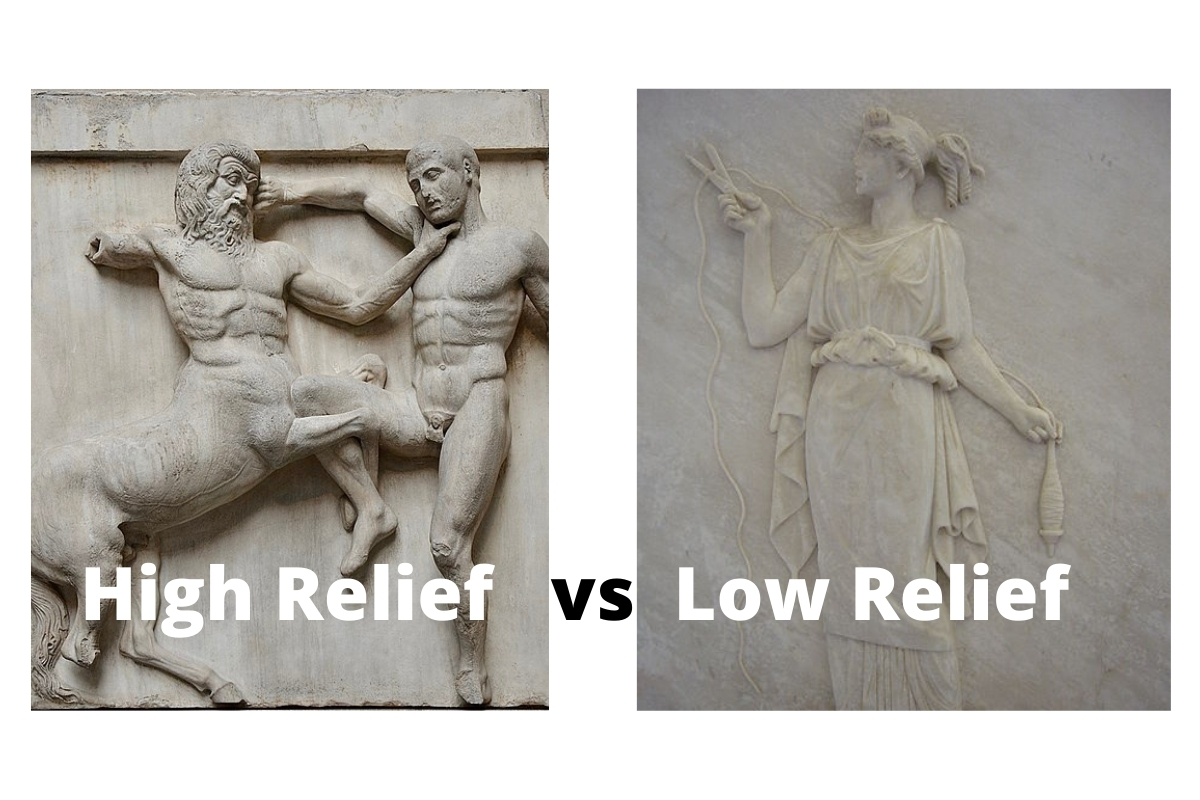Sculpture has been one of the most prominent methods humans have used to express themselves and record certain aspects of their existence.
For thousands of years, various types of sculpting techniques have been used by certain cultures for a number of reasons. Sculptures are most often used to portray a prominent figure from a culture’s religious beliefs, political leaders, or other societal figures.
Relief sculpture is one of the oldest forms of sculpting and it’s a method that’s been used by many people all over the world. The earliest relief sculptures are cave art that scientists and archaeologists believe to be as much as 30,000 years old.
Understanding the difference between high relief vs low relief sculptures is fairly simple as the main difference between the two revolves around the depth that the sculpture is carved into the material.
In this article, we will explain the major differences between high relief and low relief sculptures and cover the information related to each method used.
| Aspect | High Relief | Low Relief (Bas-relief) |
|---|---|---|
| Depth | Sculpted elements project prominently from the background surface. | Sculpted elements have minimal depth and are only slightly raised from the background surface. |
| Visual Impact | Dramatic and striking effect with pronounced depth. | Subtle and delicate effect with minimal depth. |
| Usage | Often used for sculptures meant to be viewed primarily from the front. | Commonly used in architectural decoration, such as friezes. |
What is Relief Sculpture?
Relief sculpture was the earliest form of sculpting used by humans simply because it isn’t quite as difficult as producing a three dimensional work. A relief sculpture is carved into a wall or some type of solid background that the work is carved or chiseled into.
Unlike a painting or drawing, a relief sculpture is capable of giving the viewer a three dimensional viewpoint to a certain degree, depending on whether the sculpture is a higher or lower relief.
Also Read: Famous Relief Sculptures
The earliest form of relief sculpture is believed to have been done on the walls of caves in certain parts of Europe and across other regions. A relief sculpture can be done on virtually any type of material depending on what the artist wants to use.
Some of the more famous relief sculptures from history involve either stone walls, metal casting, or even wooden surfaces. Some artists have proven to be especially skillful when it comes to carving a relief sculpture and this type of artwork commonly adorns the walls of some of the most prestigious structures in the world.
These sculptures can be done in a wide variety of sizes. Some of the largest relief sculptures in the world have been carved into massive rock cliffs and faces in various parts of the world.
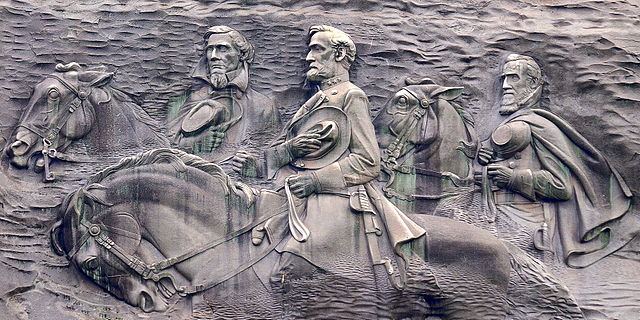
America’s largest relief sculpture the Confederate Memorial Carving is an enormous work that was carved into the side of Stone Mountain, which is near Atlanta, Georgia. The sculpture is a whopping 823 feet wide and is more than 1,600 feet in elevation.
What is Low Relief Sculpture?
Low relief sculpture is a form of artwork that’s been done for many thousands of years. Archaeologists posit that early humans first carved low relief sculptures into cave walls where they took refuge from the elements and harsh weather conditions. The earliest low relief sculptures are likely to have been done on clay or wood surfaces that have not survived from antiquity.
Low relief sculptures are also known as bas-relief works and are only slightly protruding from the rest of the background material. These types of sculptures only have a minimal amount of material removed by the artist and almost look like the outlines of the figures in the work have been etched into the stone, metal, or other material.
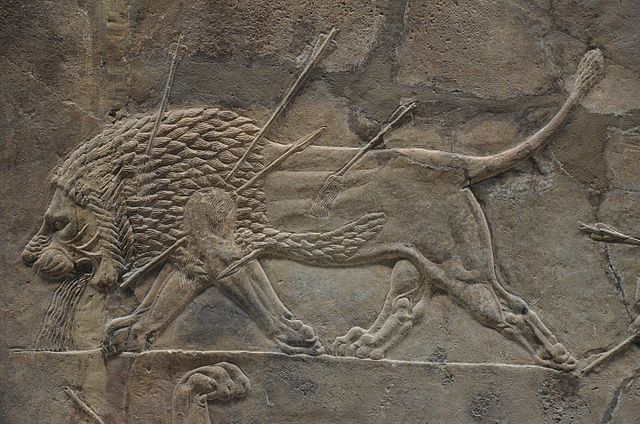
Unlike sunken relief sculptures, the main figures in the work are shown protruding from the background instead of being carved deeper into it. Many buildings and stone or even metal walls throughout the world feature different types of low relief sculptures.
For the most part, the low relief sculpture is one that’s done into the same material while high relief sometimes involves the use of different materials that makes the sculpture stand out even more.
Also Read: Statue vs Sculpture
Low relief sculptures are typically used by artists who want to portray a sprawling scene with many figures in one single sculpture. The reason for this is that a large low relief sculpture is more structurally sound than one that’s done as a high relief.
There are interesting varieties of material that have historically been used for low relief works that include marble, terra-cota, bronze, ivory, and even precious metals like gold and silver.
What is a High Relief Sculpture?
Much like the low relief works we’ve discussed, high relief sculptures are virtually the same, but involve a much deeper level of definition with more material being removed from the initial surface. Most scholars and art critics consider a sculpture to be high relief when it features certain portions of the work as being more than 50 percent ‘in the round.’
A sculpture that’s ‘in the round’ basically means one that’s three dimensional. In other words, a high relief sculpture is one that’s not completely in the round, but features figures that are much more three dimensional than low relief works.
Most high relief works have certain figures in the sculpture that are more three dimensional than other parts of the scene. This is a technique that’s often used by artists to convey a certain level of importance for specific figures over other parts of the sculpture.
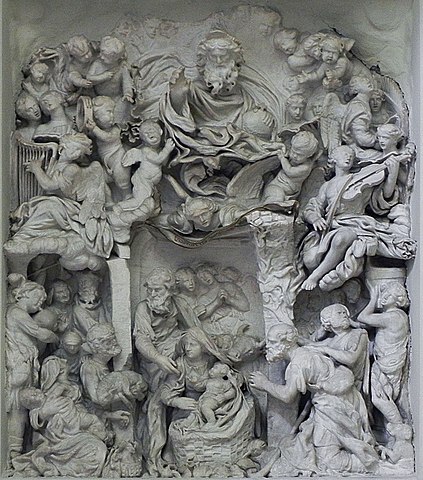
High relief sculptures are much more difficult to create than low relief works. Producing a high relief work requires intense levels of skill, concentration and understanding of the material you’re working with in order to successfully complete the work without damaging your sculpture or having parts of it break away.
This higher level of risk is part of what makes high relief sculptures nearly as impressive as those that are in the round.
Most high relief sculptures that have been done throughout history have been produced in very hard types of stone or metal.
Artists are required to be much more skillful in the creation of a high relief work as the slightest mistake might cause them to have to entirely reword a section, or completely scrap the sculpture and start anew.
Examples of Low Relief Sculptures
There are numerous works that remain from the ancient world that are among the most famous low relief sculptures ever created. Low relief sculpture was a prominent method of adorning buildings and other major structures in ancient Greece.
Also Read: Greek Statues and Sculptures
There were thousands of figures chiseled into the stone walls of various temples and other structures with some surviving until the present day in museums and other protected areas.
Archaeologists and art historians agree that the Parthenon is one of the most famous ancient structures that’s decorated with a number of low relief sculptures across its interior and exterior. The Parthenon is a large temple that was built on a hillside where it was prominently displayed to anyone that passed by.
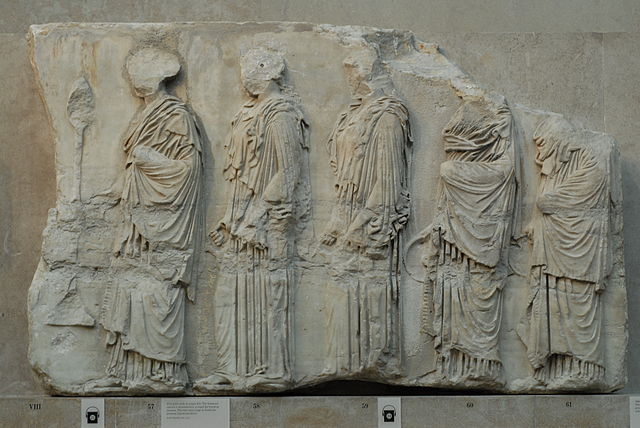
It served as a temple dedicated to honoring the Greek goddess Athena and is believed to have been built in the 5th century B.C. and many of the low relief sculptures that adorned its walls are displayed in museums throughout Europe today.
The Italian Renaissance era was a time in which many sculptors created low relief sculptures that were meant to be displayed in cathedrals and other major structures of religious or political importance.
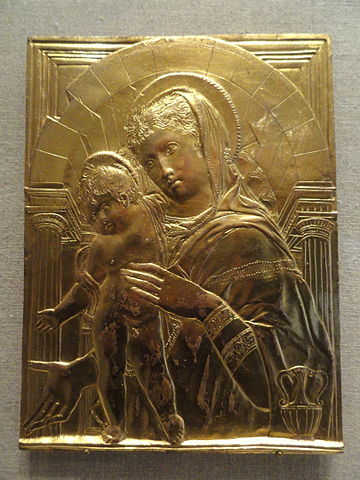
Donatello was one of the most influential figures in the Renaissance time period and he is credited with producing several cast-bronze low relief sculptures that feature many figures from the Christian faith.
Various palaces and temples from the Middle East and Asia feature these types of works, but the most common example of low relief sculptures are those that are found on coins.
For thousands of years, various rulers and governments have used small-scale low relief sculptures on metal coins. Many of them depict prominent leaders, much like the ones used today in various countries that feature historic political figures.
Examples of High Relief Sculptures
High relief sculptures naturally receive more praise and prominence than most low relief works simply because they are much harder to create and feature portions that are more like three dimensional sculpture we see today.
The Greek Parthenon was home to many low relief works, but it also featured a number of high relief works as well. These high relief sculptures feature some of the more well-known Greek gods and goddesses in intense detail.
Some of the most iconic high relief sculptures have been done in a way that actually exposes more than 50 percent of the sculpture as being three dimensional. These incredible sculptures seem to burst from the stone background with much more detail and realism than any other form of relief sculpture.
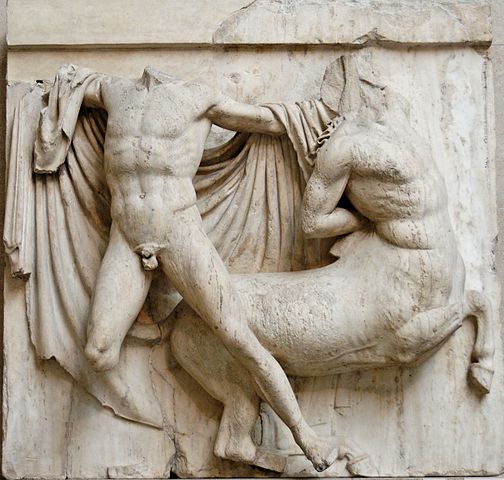
High relief sculptures were very prominent at the peak of ancient Greek culture. The various sculptures that were fully three dimensional were obviously more highly-regarded than any low relief work, but there was a considerable amount of praise given to high relief sculptures as well based on the sheer number of them in and around various places of importance.
This type of sculpture remained extremely popular with people throughout the Middle East and other parts of the world as well.
Some of the most impressive and iconic high relief sculptures ever created are those that adorn the Hindu temples in Khajuraho, India.
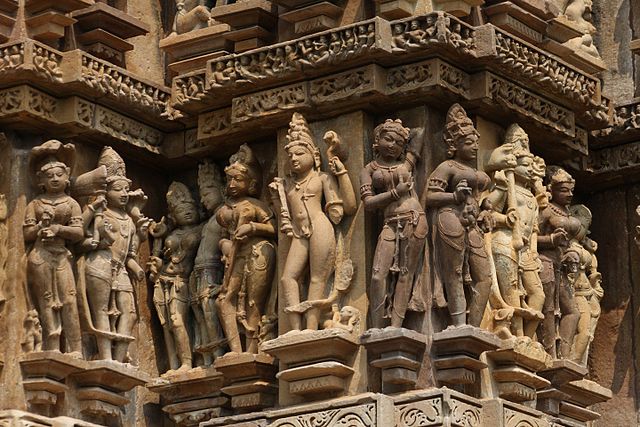
These temples feature literally hundreds of high relief works that are perched atop ledges and other sections of the walls and roof of the temples in this holy city where worshipers of various Hindu gods and goddesses traveled to on pilgrimages hundreds of years ago.
High relief remains as a popular method of sculpture into the present day as many modern artists have created a number of works that are considered to be high relief sculptures.
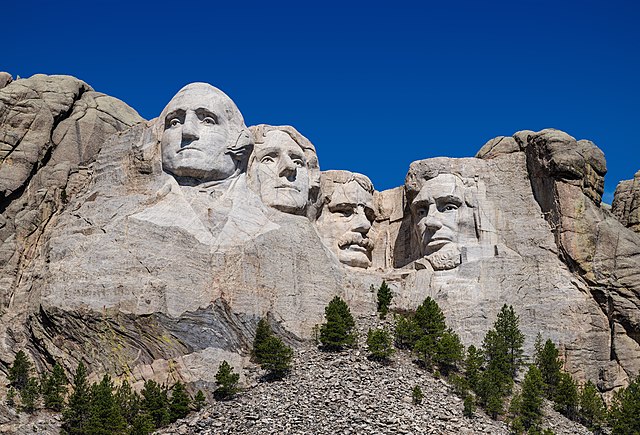
One of the most famous high relief sculptures in the world is that of Mount Rushmore, which is located on a large rock face in Keystone, South Dakota.
This massive sculpture was completed in 1941 and features four of the most famous presidents to have ever been elected in the country’s history.
Some of the more prominent structures in the modern, developed world still feature a number of high relief sculptures that center on certain themes and ideals, or historic events and other areas of importance.
In addition to high relief works done on stone surfaces, there have been some very talented artists who have used a wide variety of materials to create such works.
Conclusion
Both low and high relief sculptures have proven to be some of the most influential works in history and are widely celebrated across the world.
Understanding the main differences between low and high relief sculptures gives us a greater appreciation for such works and the efforts required to create them. These two forms of sculpture have stood as some of the most popular and enduring artworks in human history.

